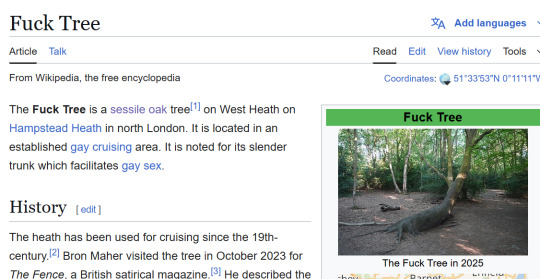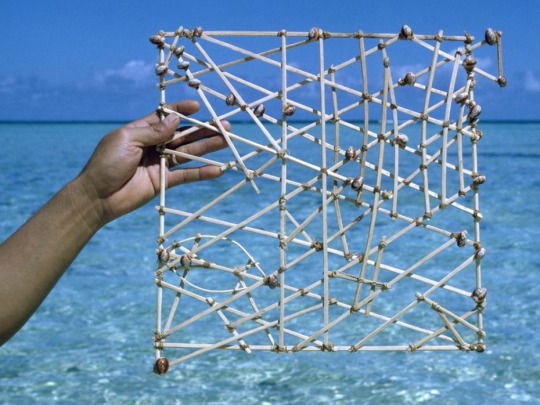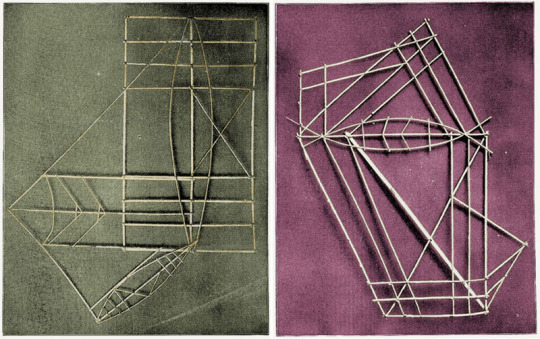History sideblog focusing on Alexander Hamilton, John Laurens, AmRev, and general queer history. My primary blog is 22degreehalo About me
Don't wanna be here? Send us removal request.
Text
Human culture isn't designed intentionally by anyone. Human culture is emergent, and is built continuously by everyone through the constant feedback loop of interaction with other people, individual experience, and social learning. No one is designing it from the top down.
It is a mistake to assume that any aspect of human culture is "for" anything in the narrow sense. Certainly culture emerges out of a historical process which can often be traced, and certainly there is the broad sense of "purpose" in which an aspect of culture might be perpetuated because it benefits certain people in certain ways, etc., but this is all an unplanned, decentralized, non-directed process. There have been efforts in human history by powerful institutions—like states—to shape culture in particular ways, and sometimes they see some amount of success, but the vast, vast majority culture is not produced in this way.
There's a particular post I'm vaguing here, whose political orientation I don't even particularly disagree with, but it significantly rubbed me the wrong way because it was worded as if culture was basically something engineered from the top down, in which everything has a discernible, coherent "purpose" that can be logically deduced. No! I don't think that's actually true!
576 notes
·
View notes
Text

happy pride month to the fuck tree I guess
36K notes
·
View notes
Text

Oh my god is part of the reason some people are *so obsessed* with the notion that 'in the past, it wasn't considered an identity, it was just a thing some people do', in part, because the only *overt* references to queer people in many past time periods is. Criminal proceedings for sodomy or other 'unnatural sex'.
I hate the idea that we can split history neatly into before homosexuality and after homosexuality. I mostly read 18th century queer history and most people date the invention of homosexuality as sometime during the 19th century. People will assume that anything they associate with after homosexuality didn’t exist in the 18th century (the belief that sexuality was inborn, the association between same-sex attraction and gender nonconformity, the myth of the homo-hetero binary). And they will assume that anything they associate with before homosexuality necessarily does apply to the 18th century (topping not being stigmatised, men being attracted to boys being considered the norm).
These assumptions are false. Some historians will try and fix this by pushing back the invention of homosexuality to the early 18th century. However this is really just putting a bandaid on a flawed idea. The truth is that history is never simple. The idea of a simplistic before and after is the problem.
#i feel like ive had a revelation#like yes it just frustrates me *so much* when people take the authoritative lawmaking and powerful part of society's statements as Universal#as though people in the past didn't have their own subcultures and disagreements or just their own brains#is there a Single Opinion on Queerness today? no!!!!!#why are people so convinced they can sum up the past just as easily?!#queer history
130 notes
·
View notes
Text
Part of the problem is that a few historians in the 70s and 80s argued that romantic friendship was seen as normative and was completely socially acceptable. Since then historians have done in-depth research showing that romantic friendship was only semi-socially acceptable and was seen as sexually suspicious by some people. But every time someone suggests romantic friendship might be part of queer history they're told "that's just the way people spoke back then" by someone who read a Tumblr post based on a Blogspot post based on the Wikipedia page that was based on a couple of articles from the 1970s.
911 notes
·
View notes
Text
John Laurens + Suffering

can you tell I've been emo about those old men lately? yeah
click for better quality, + closeups below the cut





1. His First Grief by Charles Spencelayh
saw this and immediately thought of John. not his first grief considering by this estimated age he would've lost older siblings. but thinking of it as a precursor to his mother dying. also the bird is so him :( sorry
2. Ophelia by John Everett Millais
haunts the narrative and is the pushing point for Ham(let)ton's madness yeahhh. plus laying in a creek surrounded by flowers is so him. dead in the swamp
3. Death and the Maiden by Marianne Stokes
originally was going to have john visited by death to be truer to the painting, but an angel in funeral shroud and uniform visiting alex? sorry, had to
4. The Sacrifice of Isaac by Giambattista Pittena
don't get me started. sins of the father, religious extremism, valuing god's word over loving your own son, sacrificing your son for religion/god. only divine intervention could save him and at last it didnt. so many things to think about here. i cried
5. alex when he gets The News
not based on a painting except maybe that anime meme of the girl scream crying. but ohhh my god. idk i just was rereading their letters and got so emo about it. i hope to god alexander got a few good crash-outs in private to grieve but i am really scared of the great possibility that he never did, not even ONE good scream in the middle of nowhere or breaking someone's nose over it, he just buried it and acted out in other ways. it just wasnt fairrr. i keep thinking about Them and especially about how he must have felt the moment he realized. praying it wasnt true. praying. screaming. i am in physical pain over this every day
155 notes
·
View notes
Text

🎠 stallion
I was inspired by his line “wait ’til I sally in on a stallion” in the song My Shot from Hamilton because they really were 🎵 A bunch of revolutionary manumission abolitionists 🎵 High quality versions and my process on insta (plus a bonus version without his hat!)
shop | instagram | threads | bluesky
169 notes
·
View notes
Note
Historically d'Eon is career-oriented lady who lacks interest in engaging romantic relationship, neither with man nor woman but I heard somehow d'Eon is aroace but sapphic
In fictional media if d'Eon getting in romantic relationship even platonically, would you rather see her with a man or woman?
Somehow, d'Eon seemingly giving me sapphic vibes and some people shipped her with Julie d'Aubigny.
Fictional media often pairs d'Eon with women but I think it's more due to a combination of transphobia and heteronormativity than any basis in historical fact. They see her as a man (transphobia) so she must be with a woman (heteronormativity). I suspect it's is also somewhat inspired by Gaillardet's novel Mémoires du Chevalier d'Éon in which d'Eon has numerous female lovers including Empress Elizabeth and Queen Charlotte.
In terms of actual history I've never seen much evidence that d'Eon was romantically or sexually interested in anyone. In fact she seems to indicate that she was not interested in romantic or sexual relationships. And it's not just that she was career-oriented either as this continues after her career was essentially over.
In her 1764 book Lettres, mémoires et négociations particuliéres du chevalier d'Éon she writes:
Ma vie eſt aſſez connue & l'on ſait que j'ai toujours vecu dans tous les païs ſans chevaux, ſans cabriolet, ſans chien, ſans chat, ſans perroquet, & fans maitreſſe. [My life is well known and it is known that I have always lived in all countries without horses, without a cabriolet, without a dog, without a cat, without a parrot, and without a mistress.]
~ V1 p83-84 [translated with google translate]
In 1771 she writes of “the natural lack of passion in my temperament, which has prevented my engaging in amorous intrigues”. (D’Eon to the Comte de Broglie, 7 May 1771. Translated by Alfred Rieu, D'Eon de Beaumont, His Life and Times, p141)
In her autobiography she styles herself La Pucelle de Tonnerre. This was an allusion to Joan of Arc who was known as La Pucelle d'Orléans. "Pucelle" quite literally means virgin.
That being said there is some evidence of people who were interested in d'Eon even if she did not reciprocate. Probably most notably Mme de Courcelle (and her daughter Constance) and the Marquis de l'Hospital. There was also the Marquis de Pommereau who was, allegedly, sent to England by Louis XVI to court d'Eon. When Pommereau failed Beaumarchais took his place. D'Eon and Beaumarchais engaged in mutual flirting and there was rumours of an engagement. However both may have had ulterior motives. Regardless the relationship between d'Eon and Beaumarchais came quite dramatically to an end.
If d'Eon ever genuinely considered marrying Pommereau or Beaumarchais she seems to have decided she was happier without a husband. In her autobiography she writes of Madame and Mesdemoiselles Genet:
They had to please both their mistress, who was a sovereign, and their husbands, who dominated them. For I who have neither husband, nor master, nor mistress, I would like to enjoy the privilege of obeying only myself and good sense.
~ The Chevalière d’Eon, The Maiden of Tonnerre p16
7 notes
·
View notes
Text

📜🪶 𝐻𝐴𝑀𝐼𝐿𝑇𝑂𝑁 𝑎𝑛𝑑 𝐿𝐴𝑈𝑅𝐸𝑁𝑆
just two aides-de-camp transcribing correspondence for General Washington, except Hamilton makes it a priority to bother Laurens while they're working (...I draw historical lams now apparently)
180 notes
·
View notes
Text


lowkey don't like this because I lost motivation halfway through. I'm just gonna stick to drawing sketches because they're quick and fun
65 notes
·
View notes
Text

A quick winter drawing for everyone ♡
268 notes
·
View notes
Text

Polynesians did also rely on a form of a physical map called a stick chart, illustrating the specific wave and swell patterns surrounding different island chains. These were particularly helpful during cloudy conditions when the sun and stars were less useful. To navigate the Marshall Islands, the Marshallese represented ocean swell patterns using parts of coconut fronds and shells as islands. Like a subway map, they don’t so much represent distances as they do relationships. The complex and decorative stick charts were often only understood by the person who made them. They were memorised before a voyage by the pilot who would lie on the floor of a canoe to get a sense of swell movement and often lead a squadron of 15 or more boats.


43K notes
·
View notes
Text
Romantic De-prioritization and Aromantic Resonances in History
An Aromantic Spectrum Awareness Week project
🌿 🌿 🌿
“Representation” is a major theme in ace and aro communities, and it’s usually used to mean fictional characters. That’s all well and good, but the emphasis on the power of fictional narratives sometimes leaves me feeling a little empty. While it’s definitely refreshing and empowering to see characters going through the same things I am, sometimes I think… their happy ending isn’t real, it’s because an author decided that they should have one and then created a world in which they could.
I’ve felt most uplifted and empowered by histories of real people living the kind of life I wanted, being able to point to them and say, “See, THEY did it, THEY had the same priorities and feelings I do, and they went on to have the non-romantic life I want and they became important/respected/brilliant/supported/loved anyway.” With a sense of both that, it was done at different times in the past when mores were different; and not only that, when in some ways it was harder. If they could do it, I can do it too. I felt represented. And I want more of that out there.
Over the course of Aro Week, I’ll be presenting mini-biographies of people who never married, never expressed romantic desire, or otherwise de-prioritized romance in their lives. I can’t necessarily claim they were definitely aromantic; we can’t know that, and they didn’t name their identities that way. But they made their way in the world aromantically, and were inspirational and resonant on my own aromantic journey.
Mary Anning
Nikola Tesla
Louisa May Alcott
Henry David Thoreau
Mary Moody Emerson
Mary Long and Grace Parker
Ella Cara Deloria
394 notes
·
View notes
Text
The South Carolina Historical Society puts on an annual winter lecture series, and the theme this year is "Untold Stories of the American Revolution." The first lecture of the series will be "Vicious and Immoral: Homosexuality, the American Revolution, and the Trials of Robert Newburgh" presented by John G. McCurdy on February 11, 2025. This lecture speaks right to my special interests, and I'm sure many of you would be interested in attending the lecture too. You can register for this lecture and other lectures in the series here (both in-person and livestream options available). Other lectures in the series include "The Tory's Wife: A Woman and Her Family in Revolutionary Carolina," "A Promised Land: Jewish Patriots, the American Revolution, and the Birth of Religious Freedom," and "Revolutionary Blacks: Discovering the Frank Brothers, Freeborn Men of Color, Soldiers of Independence." It's certainly a great lineup of topics and speakers this year!
Surprisingly, I had never heard of John McCurdy or his works prior to this lecture announcement. It appears that his lecture will be based on his recent book of the same name. I've just started reading the book myself and have been enjoying it so far. It is interesting and refreshing to see a discussion of queer history so specifically framed in the context of the American Revolution. John McCurdy previously talked about this book at the Museum of the American Revolution, and you can watch that presentation here. He has a few other publications, including a book titled Citizen Bachelors: Manhood and the Creation of the United States. I've picked this one up as well but haven't had the chance to read it yet. I'm certainly excited to have found some new books that discuss sexuality and gender in late 18th century America.
267 notes
·
View notes
Text
If you were the handsome blonde flag bearer in yellow at the Battle of Prestonpans Jacobites Rising of 1745 I’m sorry if I knew you and didn’t recognise you if that’s why you kept staring at me, I didn’t want to wave during the battle and look like a fool
30K notes
·
View notes

